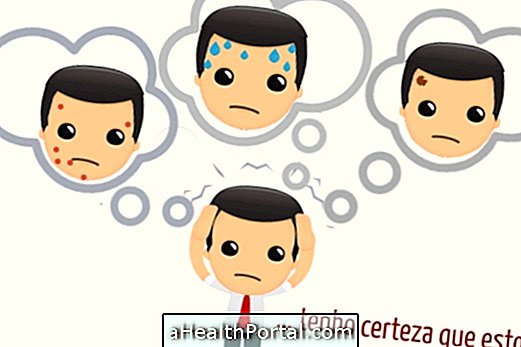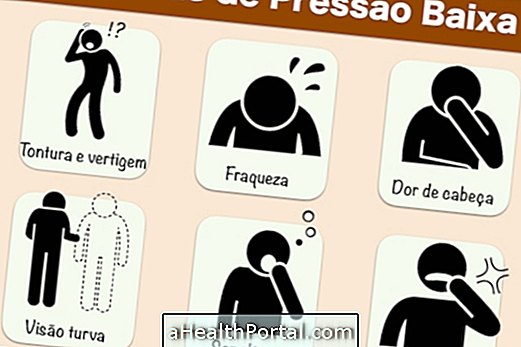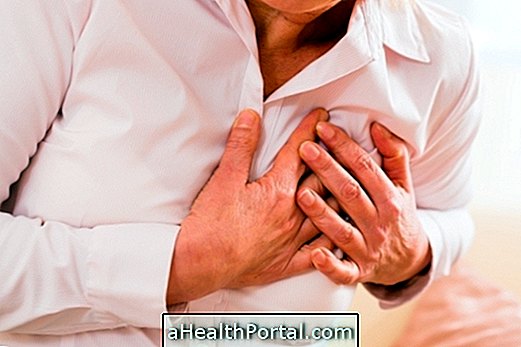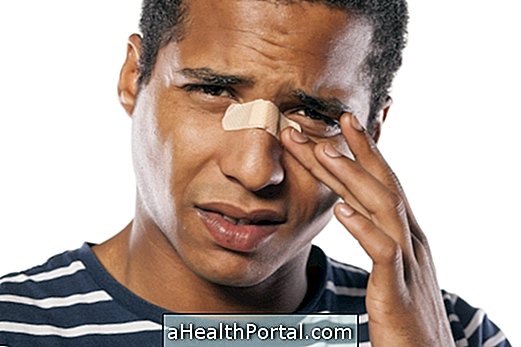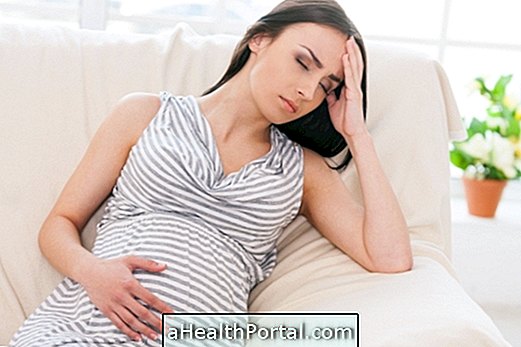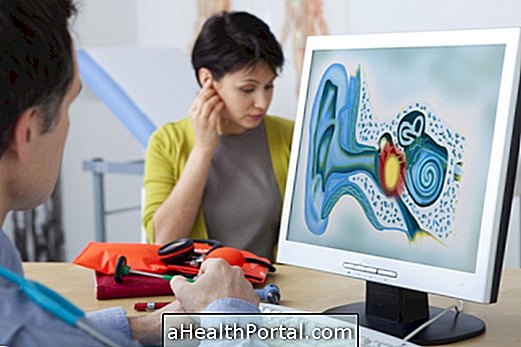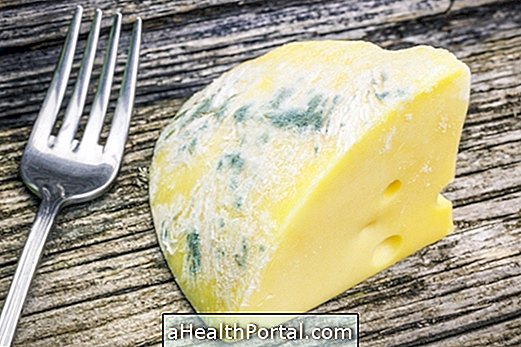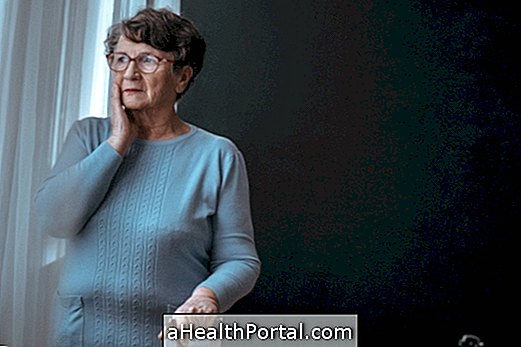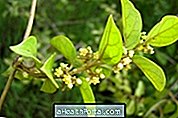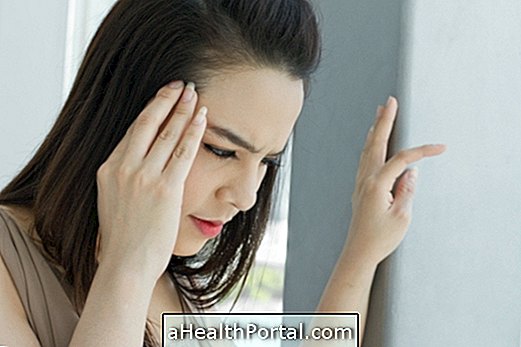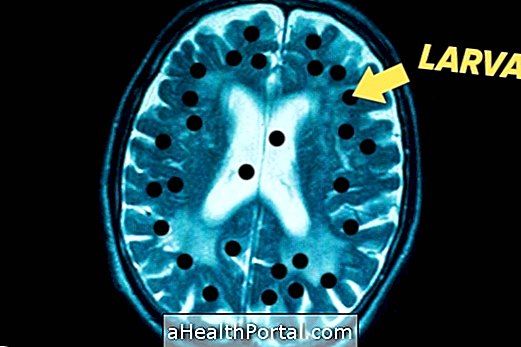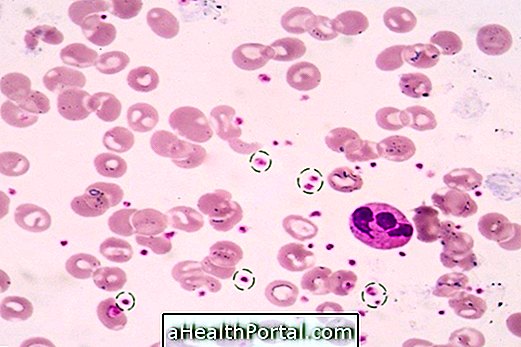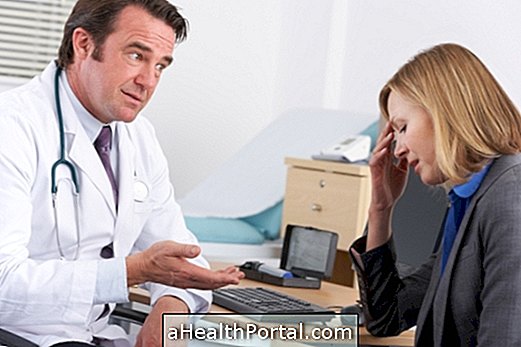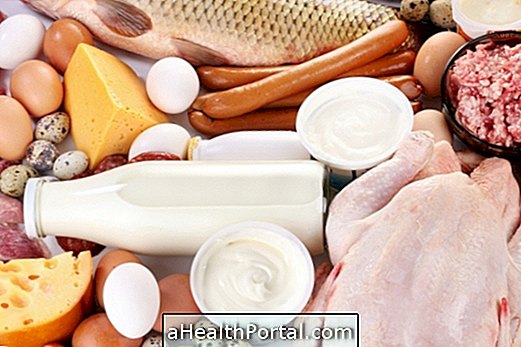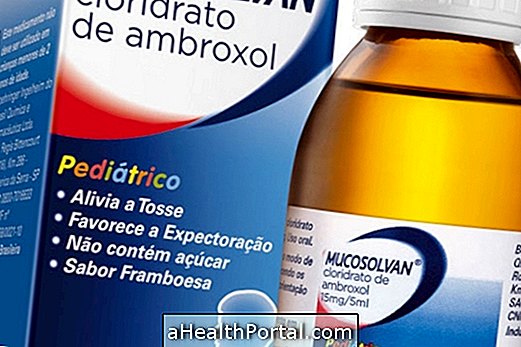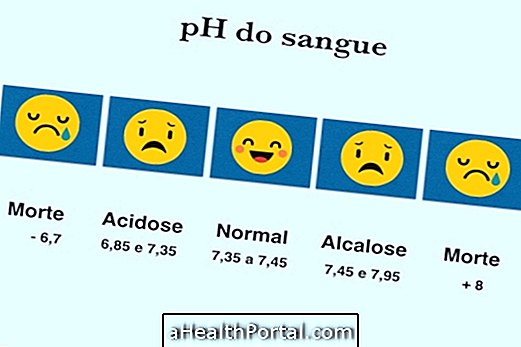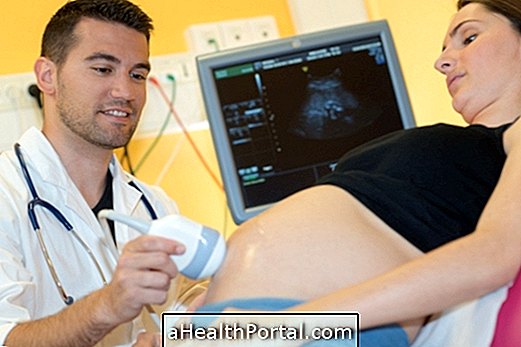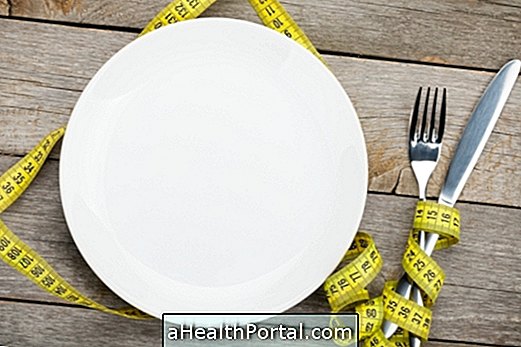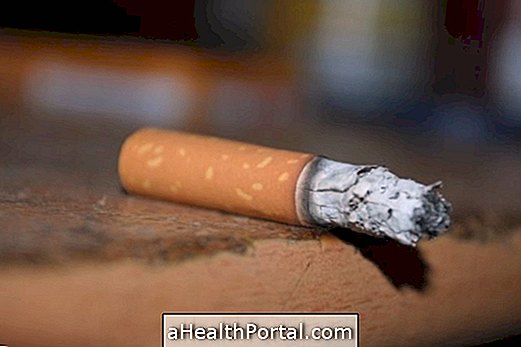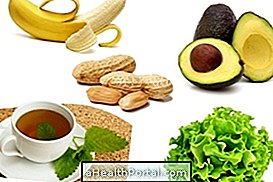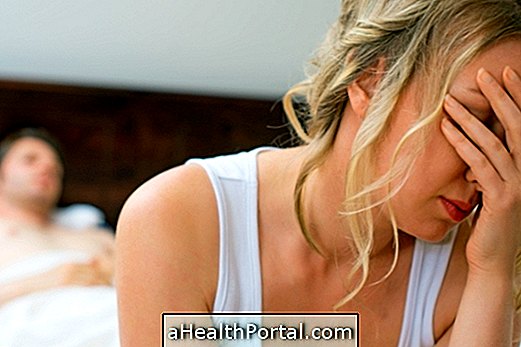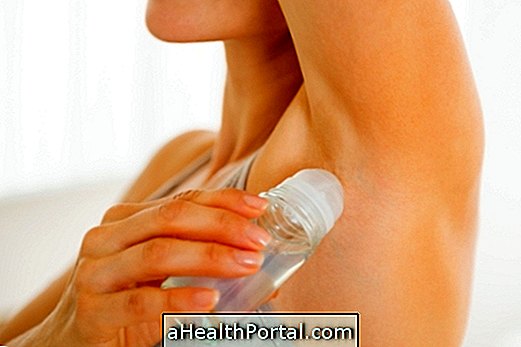Calf pain is a very common symptom at any age, and may arise due to different factors. However, most of the time it is caused by intense physical activity, being very common during the race, being the most used muscle in this exercise.
However, pain in the potato of the leg can also indicate more serious situations, which should be evaluated by the doctor, such as baker's cyst, varicose veins, thrombosis or rupture of the Achilles tendon.
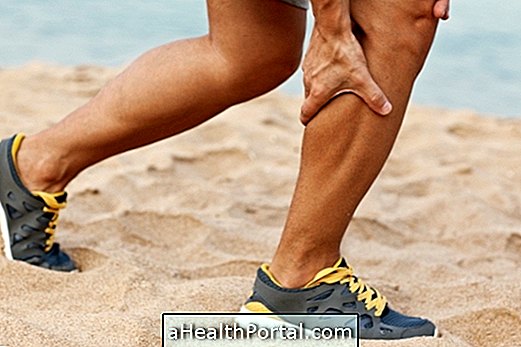
Main Causes of Calf Pain
The most common causes of leg potato pain are:
1. Poor blood circulation
The poor circulation mainly affects sedentary and older people, who do not practice physical activity. But it can also affect pregnant women, especially at the end of pregnancy, and also people who have had surgery recently and who are still resting in bed. The sore calf in these cases is not a major cause for concern but can leave your feet cold and be uncomfortable to walk on.
- What to do: Stretching can help lessen the pain and discomfort of poor circulation, but it is important to exercise regularly to improve circulation and prevent the formation of varicose veins, for example. Other good tips include wearing elastic stockings, not sitting too long or standing and decreasing the amount of salt in food to avoid water retention. Check out some foods to improve blood circulation.
2. Deep venous thrombosis
Thrombosis is a more common vascular disorder in the elderly. Thrombosis should be suspected when there is pain in the leg and it becomes swollen and hard. It occurs when a thrombus looses from a vein and reaches important organs like heart or lungs blocking the circulation in these places, being very serious. More details in: Deep venous thrombosis.
- What to do: If you suspect that your leg is having a thrombus, you should go to the doctor as soon as possible for it to evaluate and indicate the use of blood thinning medicines such as aspirin, a doctor may also have surgery to place a stent ensure blood flow.
3. Varicose veins
When the person has many varicose veins, even if they are small, or only 1 or 2 large and long varicose veins, he may frequently have pain in the leg potato. In this case the veins become more swollen and there is a feeling of heavy and tired legs.
- What to do: The treatment to cure varicose veins can be done with elastic stockings, use of varicose vein remedies and practice physical activity because the blood is pumped harder and the cardiac capacity also improves. Other options include laser therapy, sclerotherapy and surgery for varicose veins. Learn all the treatment options for varicose veins.
4. Baker's cyst
The baker's cyst usually appears behind the knee, being a sore 'ball', which can also cause leg potato pain and tiredness.
- What to do: Baker's cyst is not severe but causes great discomfort, and it is recommended to wear compression socks, put on an ice pack, and do physiotherapy. See the treatment in more detail.
5. Infectious cellulitis
Infection in the leg, scientifically called infectious cellulitis, causes severe pain in the calf, with intense redness. This is due to the entry of bacteria penetrate the deeper layers of the skin
- What to do: You should see your doctor as soon as possible to prevent bacteria from entering the bloodstream spreading throughout the body. Treatment is done with antibiotics and may need to be admitted to the hospital. Here's how to recognize and treat infectious cellulitis.
6. Achilles tendon rupture
In case of direct trauma to the leg or heel or during a very intense physical activity, there may be the rupture of the Achilles tendon. The classic symptoms are pain in the calf with intense difficulty walking, pain when pressing the Achilles tendon and it is common for the person to say that he heard a crack or something hit his leg.
- What to do: You should go to the doctor because the treatment is done by plastering the foot and in some cases it may be necessary to have surgery. Learn treatment details here.
7. Calf pain in pregnancy
Calf pain in pregnancy is a normal symptom that happens due to the accumulation of blood in the legs caused by hormonal changes. Pain in the calf during pregnancy arises mainly at night and during the day cramps may arise which are related to lack of potassium.
- What to do: The pregnant woman should do stretching of the cramp-affected muscle and eat bananas or other potassium-rich foods, wear elastic stockings during the day, and raise her feet at night to improve blood circulation and reduce pain.
8. Calf pain during the run
During the practice of exercises like running, the most likely is that the pain is caused by some muscle disorder. Thus, the most common causes of calf pain during the run are:
- Intense physical exercise, mainly in climbs and in this case the two legs are affected at the same time;
- Stretching, contracture or muscle strain;
- Cramp, which suddenly appears on one leg, and may also cause pain in the foot;
- Stones syndrome, which causes severe and sudden pain, as if it had taken a stone in a leg;
- Lack of minerals, which can happen during long and lacking hydration tests.
When feeling a strong pain in the potato of the leg during a race is recommended to stop to run and to lengthen the muscle, sitting on the ground and with the legs well stretched, pointing the toes towards his nose. But if the pain is bearable, being only a nuisance affecting both legs at the same time, it is most likely to be fatigue due to lack of physical conditioning, and with persistence in training, this pain tends to disappear.
Warning signs to go to the doctor
It is recommended to go to the doctor or emergency room if you have the following signs and symptoms:
- Intense pain in the calf that arises suddenly;
- Pain, swelling and stiffness in only one leg;
- Redness and feeling of swelling or burning in one leg.
It is also important to seek medical evaluation if you have severe muscle pain that does not go away within 3 days.
Ways to combat calf pain
Calf pain tends to decrease after exertion and can be treated with physical therapy, massage or rest in milder situations, or surgery in the most severe situations.
To relieve the pain in the calf, some simple strategies that can help are:
- Put ice pack on the calf;
- Massage the muscle;
- Perform stretching of the muscle;
- Drink lots of water and eat foods rich in sodium and potassium;
- Rest.
In the treatment of pain in the calf can also be used anti-inflammatory or muscle relaxants, such as Paracetamol, Voltaren or Calminex or natural remedies. See what they are in the following video:

